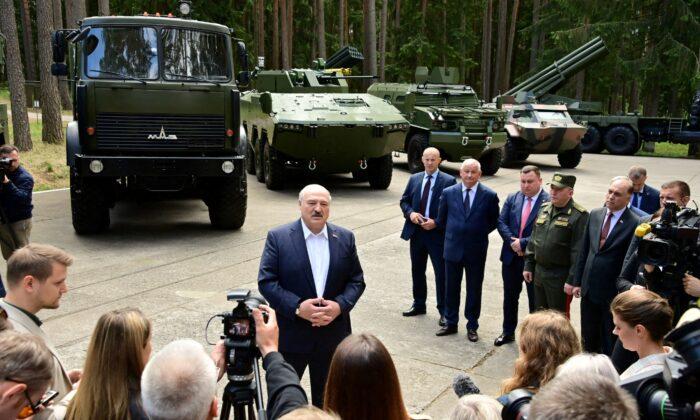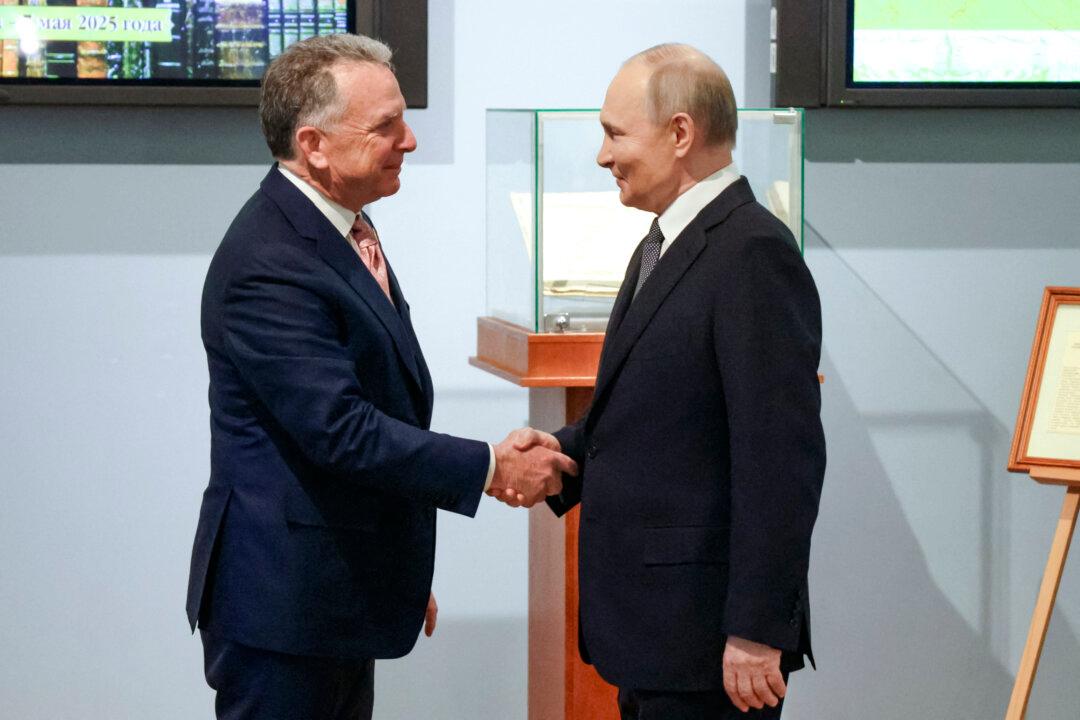Belarus—which played a critical role in ending last week’s aborted mutiny against the Kremlin by the leader of Russia’s Wagner Group—has returned to the spotlight.
A key Russian ally, the country made headlines earlier this year when Moscow unveiled plans to station tactical nuclear weapons on Belarusian soil.
On June 27, Belarusian President Alexander Lukashenko confirmed that a large number of Russian nuclear weapons have already been transferred to the country.
“It’s surprising they have failed to spot them,” he was cited as saying by the BelTA news agency, presumably referring to Western intelligence agencies.
Now, Minsk is hosting disgraced Wagner chief Yevgeny Prigozhin, whose short-lived rebellion on June 24 briefly appeared to threaten Moscow itself.
However, the crisis was averted—in less than 24 hours—after Lukashenko, in coordination with Russian President Vladimir Putin, brokered a de-escalation deal with Prigozhin.
In return for calling off his rebellion, the Wagner chief was permitted to relocate to Belarus, where—under the terms of the deal—he would be spared prosecution.
Russia’s Federal Security Service (FSB) had earlier charged Prigozhin with “inciting armed mutiny”—an offense that can carry a 20-year jail sentence.
Prigozhin arrived in Belarus on June 27. On the same day, the FSB dropped the charges against him.
According to Russian media reports, Prigozhin will be watched by the Belarusian authorities to ensure he doesn’t “engage in any political activity.”
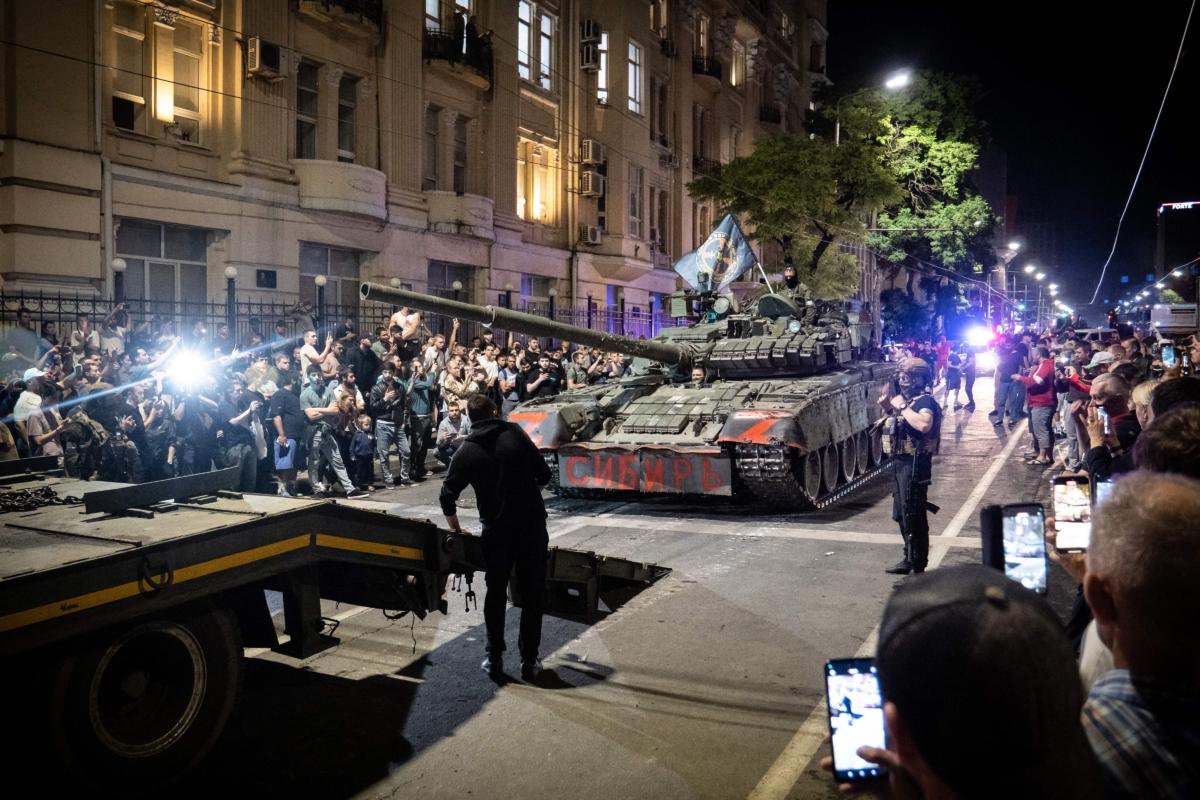
Members of the Wagner group prepare to pull out from the headquarters of the Southern Military District to return to their base in Rostov-on-Don late on June 24, 2023. Roman Romokhov/AFP via Getty Images
‘Need to Cool Down’
Lukashenko has defended the terms of the deal, which some pro-Russia critics view as too lenient, given the scope of Prigozhin’s transgressions.“There is no need to imprison anyone,” Lukashenko told BelTA following Prigozhin’s arrival in Belarus.
“This is my message to Russian flag-wavers and turbo-patriots,” he said.
“We need to cool down and turn this page,” he added. “If needed, we will return to this story. But now we need to cool down.”
In power since 1994, Lukashenko has long been viewed as one of Putin’s closest allies.
“President Putin enjoys longstanding good relations [with Lukashenko]—not just as allies, but as friends,” Kremlin spokesman Dmitry Peskov said on June 27.
According to Peskov, the two leaders “exchange opinions and coordinate their actions on a daily basis.”
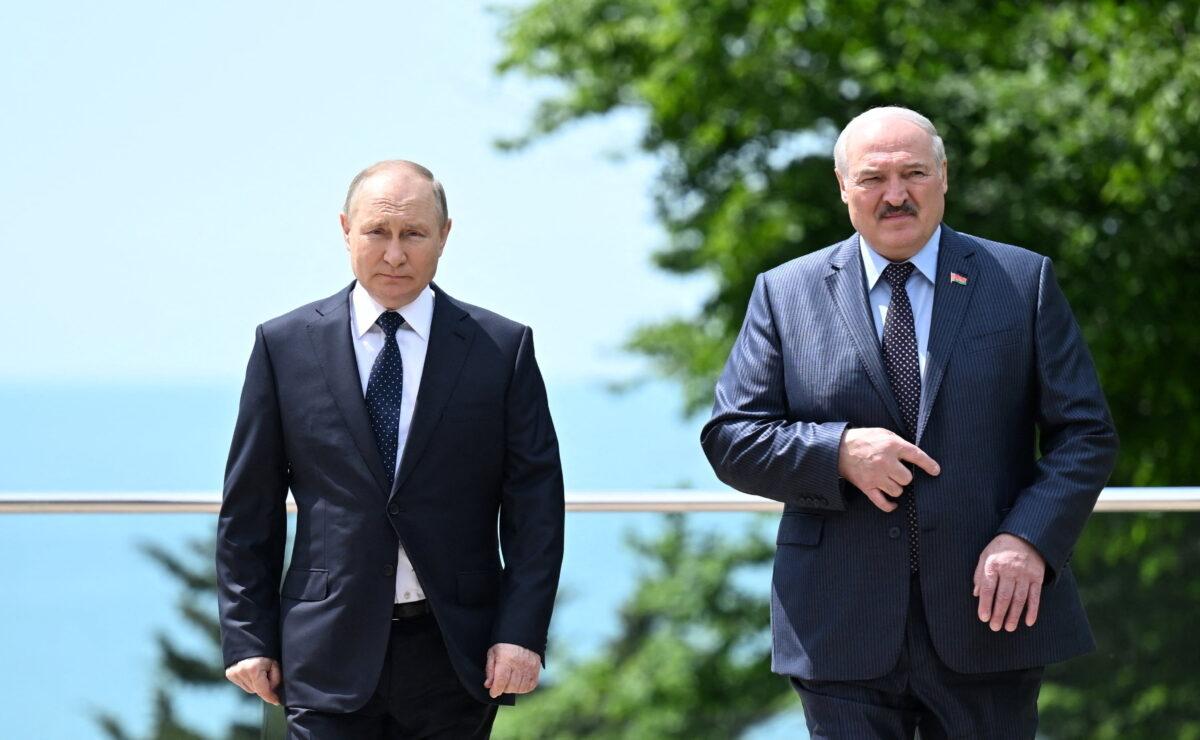
Russian President Vladimir Putin and Belarusian President Alexander Lukashenko walk during a meeting in Sochi, Russia, on May 23, 2022. Sputnik/Ramil Sitdikov/Kremlin via Reuters
The Union State
In April, Lukashenko visited Putin in Moscow to discuss a “Union State” treaty that has bound their two countries since 1999.The treaty aims to cement economic, security, and defense ties between Russia and Belarus, both of which are former Soviet republics.
Within the framework of the Union State, the two countries share a security structure that includes a joint Regional Group of Forces (RGF) and a jointly operated air-defense system.
On June 28, Natalya Kochanova, a senior Belarusian lawmaker, hailed the Union State as a “center of power that everyone must reckon with—despite their own strategic ambitions.”
In addition to the Union State treaty, Belarus is a member of several Moscow-led regional blocs, including the Commonwealth of Independent States and the Collective Security Treaty Organization.
It’s also on track to become a full member of the Shanghai Cooperation Organization, a formidable bloc of Eurasian states founded by Moscow and Beijing in 2001.
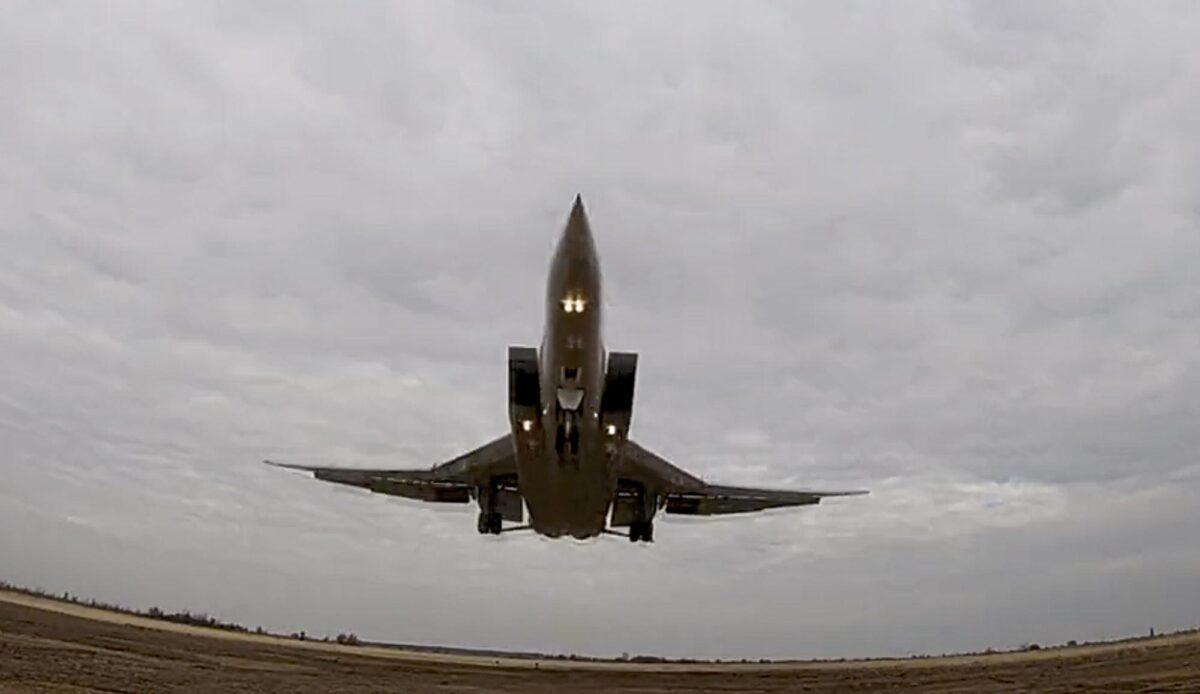
A long-range Tu-22M3 bomber of the Russian Aerospace Forces takes off to patrol in the airspace of Belarus, from an airfield in Russia on Nov. 10, 2021. Russian Defense Ministry Press Service via AP
Military Cooperation
Since Russia launched its invasion of Ukraine early last year, military cooperation between Moscow and Minsk has ramped up exponentially.In October 2022, the two countries established the joint RGF, comprised of Russian and Belarusian military personnel. Soon afterward, Moscow dispatched thousands of troops—and substantial military hardware—to Belarus.
In December, Minsk announced that Russian-deployed Iskander and S-400 missile systems were up and running on Belarusian territory, exacerbating fears of escalation.
In the same month, Putin, along with his ministers of defense and foreign affairs, paid a rare visit to Minsk for closed-door discussions with Belarusian officials.
Shortly before the visit, Peskov, the Kremlin spokesman, described Belarus as Moscow’s “No. 1 ally.”
Belarus has yet to play an active role in the ongoing Russia–Ukraine conflict. Lukashenko himself has repeatedly said he has no intention to send Belarusian forces to Ukraine to fight alongside Russian troops.
But increasing military cooperation has prompted fears that Belarus could be used as a staging ground for a potential Russian push on Kyiv—as was seen in the opening weeks of the conflict.
Belarus is located in the immediate north of Ukraine. The two countries share a roughly 675-mile-long border, which runs less than 100 miles from Kyiv.
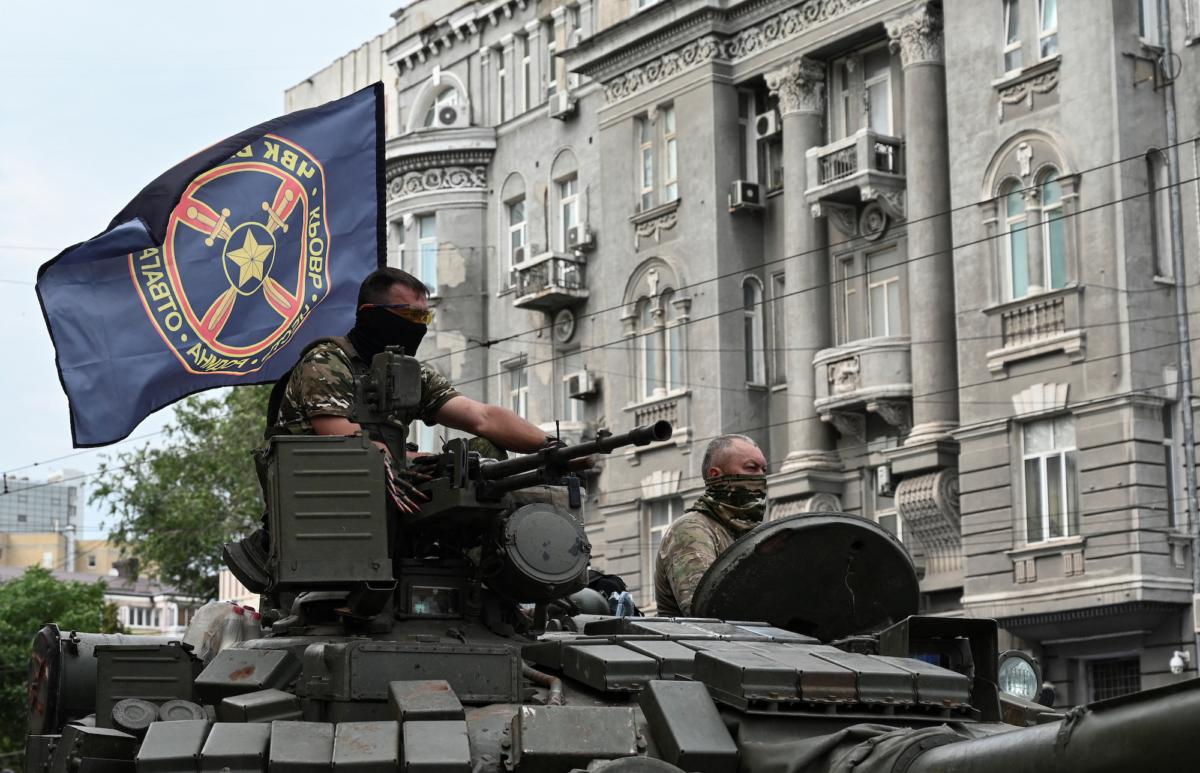
Fighters of the Wagner private mercenary group, are seen atop a tank while being deployed near the headquarters of the Southern Military District in the city of Rostov-on-Don, Russia, on June 24, 2023. Stringer/Reuters
Army on Alert
On June 27, Lukashenko said the Belarusian military had been put on high alert while Prigozhin’s mutiny was underway.“It took just half a day for the Belarusian army—all the armed forces, including the police and special units—to be brought to full combat readiness,” he was quoted as saying by BelTA.
He also claimed the army had stopped armed opposition groups—he mentioned the “so-called Kalinovsky Regiment”—from inciting a “revolution” in Belarus meant to coincide with Prigozhin’s rebellion.
Established in 2022, the Kalinovsky Regiment reportedly consists of disaffected Belarusians who have volunteered to fight Russian forces in Ukraine.
The Epoch Times was unable to verify Lukashenko’s assertions.
In 2020, Minsk was rocked by large demonstrations that almost succeeded in bringing down Lukashenko’s government.
Minsk and Moscow view those protests as a Western-backed attempt at regime change, drawing parallels with Kyiv’s 2014 “Maidan Revolution,” which led to the ouster of Ukraine’s pro-Russia president.
